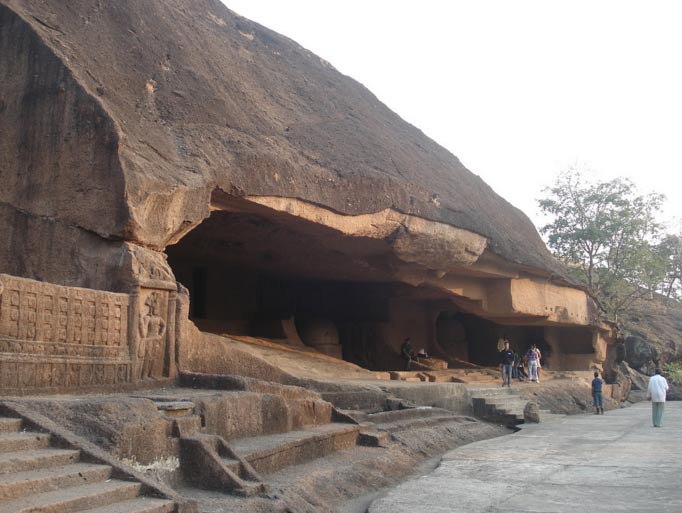
Seven caves that served as shelters from monsoons for Buddhist monks more than 2,000 years ago (and even into the 1990s) have been discovered in the forests of the Sanjay Gandhi National Park in Mumbai, India. One of the caves has the ruins of a harmika or the top part of a stupa.
These are not the only Buddhist caves in the park, which is the biggest park inside any city in the world. About 160 other caves, named the Kanheri Caves, are nearby and were dug about 2,000 years ago.
The seven recently discovered caves date from between the first century BC and the fifth or sixth century AD, say various news reports from India. One of the researchers who found the caves told Scoopwhoop.com that there may be more undiscovered caves in the park.
Researchers deliberately looked for the caves and surveyed the area because caves near Bihar were mentioned in the Pali Buddhist scriptures. They looked near water sources because most viharas or monk dwellings were built near water, says The Times of India article about the discovery. Suraj Pandit, who led the team, told the newspaper:
“The newly discovered caves may have been older than the Kanheri Caves as they were simpler in form and they lacked water cisterns, which are found in the more evolved architecture of Kanheri. Moreover, we found monolithic tools which were prevalent in the 1st century BC. The absence of water cisterns also indicate that monks lived there in the monsoon.”
Two institutions, Mumbai University’s Center for Archaeology and Sathaye College’s department of ancient Indian culture, participated in the expedition. The three-person team, which included a journalist, got permission from the forest department to explore the park. The team knew that monks dug caves near water sources, so they hiked to a waterfall near the Kanheri Caves, a strenuous walk of 20 minutes, says The Times of India. They walked through shrubbery and cacti and reached the top of the waterfall after 30 minutes.
“There were caves on either side of the waterfall—three on one side and two on the other. It was very clear these were excavated from the natural rock. The smooth curve, the plastering, the door beams, the benches to sleep on, were all indications that these were man-made caves,” Pandit told the Times.
The team realized later, after Pandit had a fall and fractured his hand and cut his head and was rushed to the hospital, that the monks probably built steps as an easier way to reach the caves. The Times doesn’t mention if the researchers ever found steps.
The next day the other two members of the team, Akash Pawar and magazine editor Vinayak Parab, returned and found the other two caves. They discovered modern bathroom tiles in one cave and realized it was used by a sadhu who lived in the park until the high court of Bombay evicted all sadhus—Hindu holy men—from the park in the 1990s.
There are many other Buddhist caves and caves of other religions in India, including the Ellora Caves near Aurangabad in Maharashtra. The site is home to 34 monasteries and temples, extending over a distance of more than 2km (1.2 mi).
These structures were dug into the wall of a high basalt cliff. It is unclear when they were built, however estimates range from between 200 BC – 600 AD to between 600 AD -1000 AD. The oldest caves can be found on the southern side of the cliff and are of Buddhist origin. It has been claimed that these caves were built between the fifth and seventh century AD, during which there was a flourishing of the Buddhist Mahayana sects in the region.
The Buddhist caves comprised of monasteries and a single large temple (Cave 10). A lot of effort was put into these structures. For instance, in Cave 12, the three-story building is believed to have been built entirely by human hands and hard labor. The rock floors and ceiling of this cave were made level and smooth, reflecting the skill and craft of the builders.
Source : ancient-origins.net




